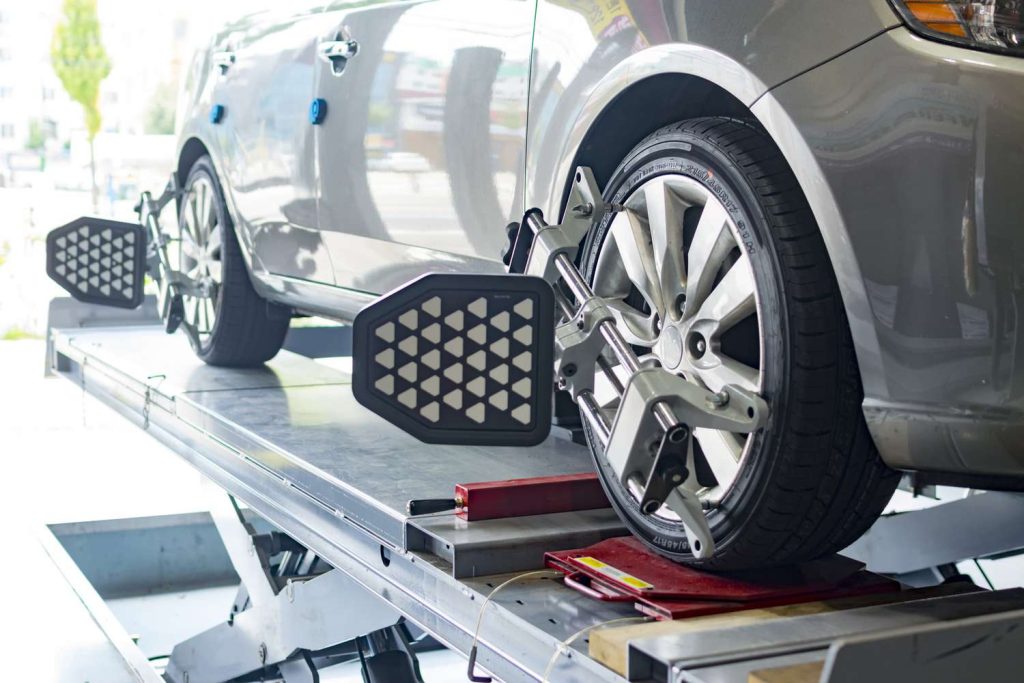Wheel alignment, or tyre alignment, is a process that ensures your tyres wear evenly and perform optimally. Additionally, it can prevent your car from dragging to one side or vibrating erratically while driving.
What is a Tyre Alignment ?
Vehicle suspension (the part of the car that links the frame to the wheels) is adjusted during an alignment. It has nothing to do with adjusting the wheels or tyres. car wheel alignment is determined by the angles at which the tyres meet the road.
How Do I Check To See If My Tyres Need To Be Aligned?
- There are a couple indicators that your car could benefit from an alignment check. If you’ve seen any of these signs, it’s time to get your alignment examined by a professional.
- Abnormally worn treads
- Drifting automobile to the left or right
- When going straight, your steering wheel is not in the centre position.
- Disturbed Steering Feel
- CASTER, TOE, and CAMBER

A tyre alignment check involves the technician primarily caring about three things:
- The First CAMBER
If you look at the tyre from the front of the car, it will either be pointing in or out. Misalignment is indicated by excessive inward or outward tilt, also known as negative and positive camber, respectively. Camber misalignment could be caused by worn wheel bearings, ball joints, or other suspension components.
- Camber and TOE Information
Toe alignment, as contrast to camber alignment, refers to how much your tyres lean inward or outward when viewed from above. Stand on your own two feet if it doesn’t make sense. Tilt them inward, towards your midsection. Toe-in alignment is when all four of your car’s tyres point in the same direction (remember, from above). Toe-out alignment is achieved by angling the feet outward. Both need to be tweaked a bit.
- Data for CASTER Toe Tyre Alignment
Adjusting your caster angle can improve your vehicle’s handling, stability, and turn radius. When viewed from the side, it is the angle formed by your vehicle’s steering axis. The steering axis will be skewed in the direction of the driver if the caster setting is increased. Conversely, a negative caster angle will cause your vehicle’s steering axis to lean forward.
Tyres will wear unevenly and prematurely if the wheels aren’t properly aligned. Examples of uneven tread wear caused by misalignment include the following:Tyres are said to be “feathered” if they have a rounded edge on one side and a jagged edge on the other. This is a common symptom of crooked toes.
When tyre wear is uneven like this, the inside or outside of the tread becomes noticeably more worn than the centre. This form of wear is caused by either positive or negative camber, as the name suggests.

